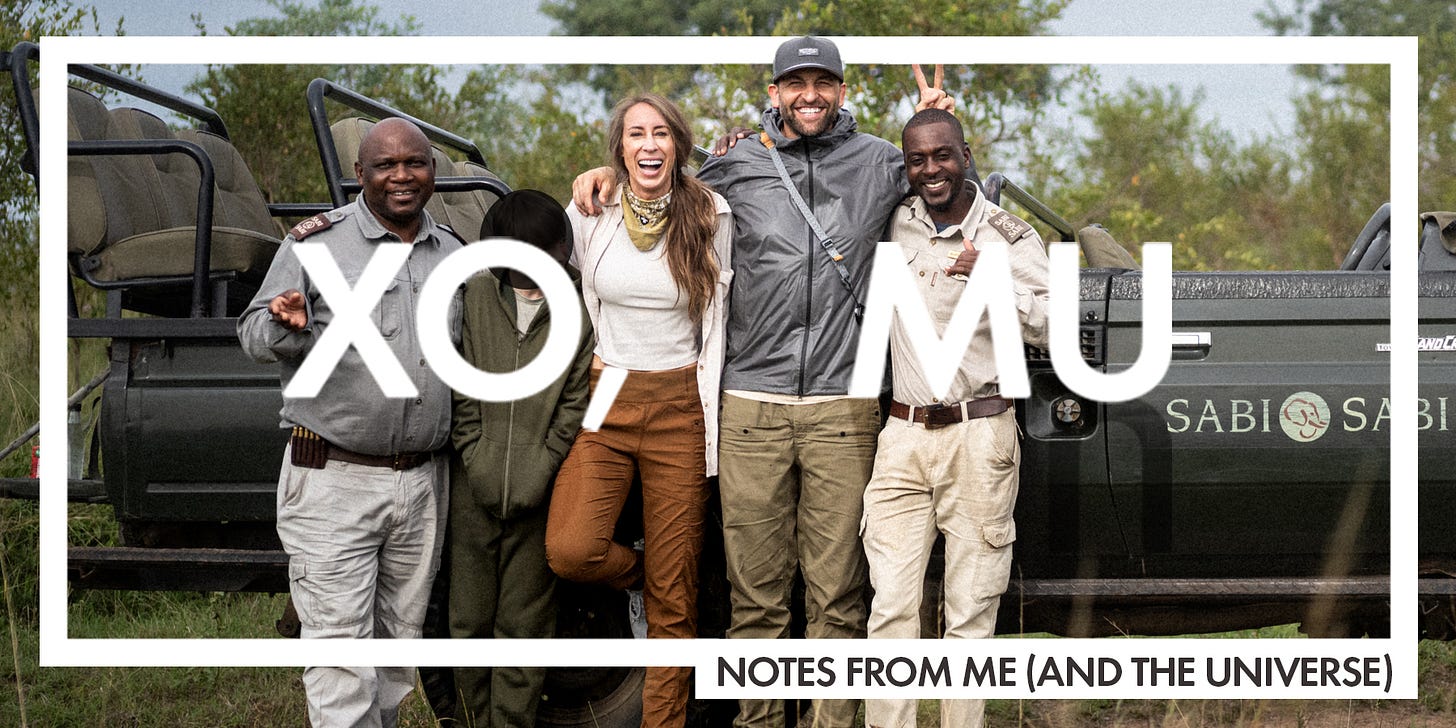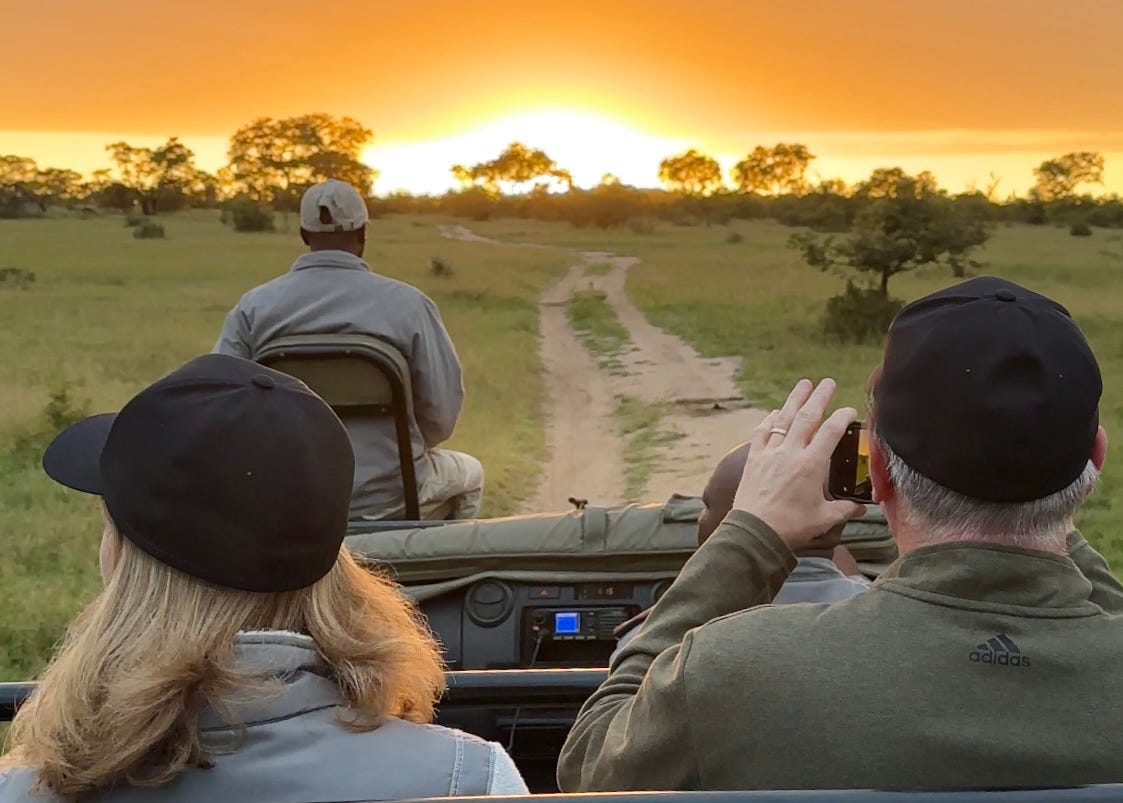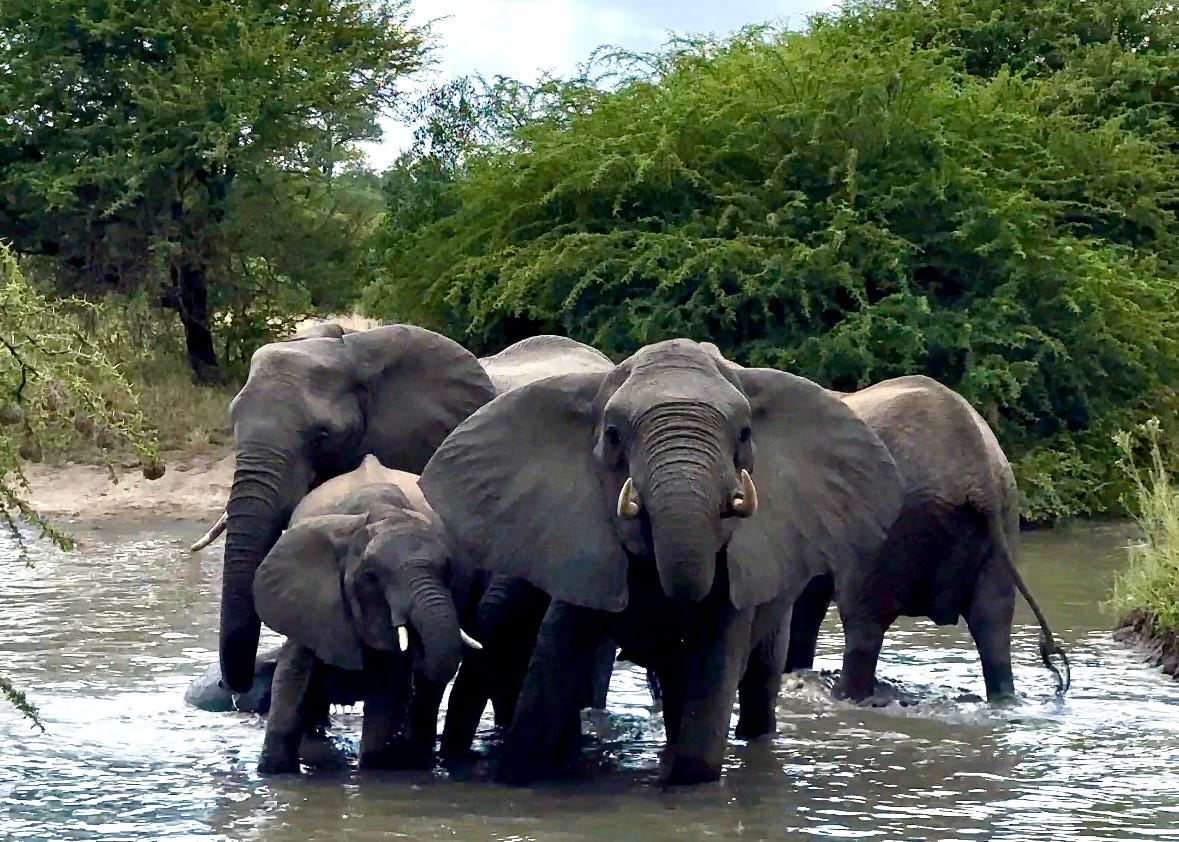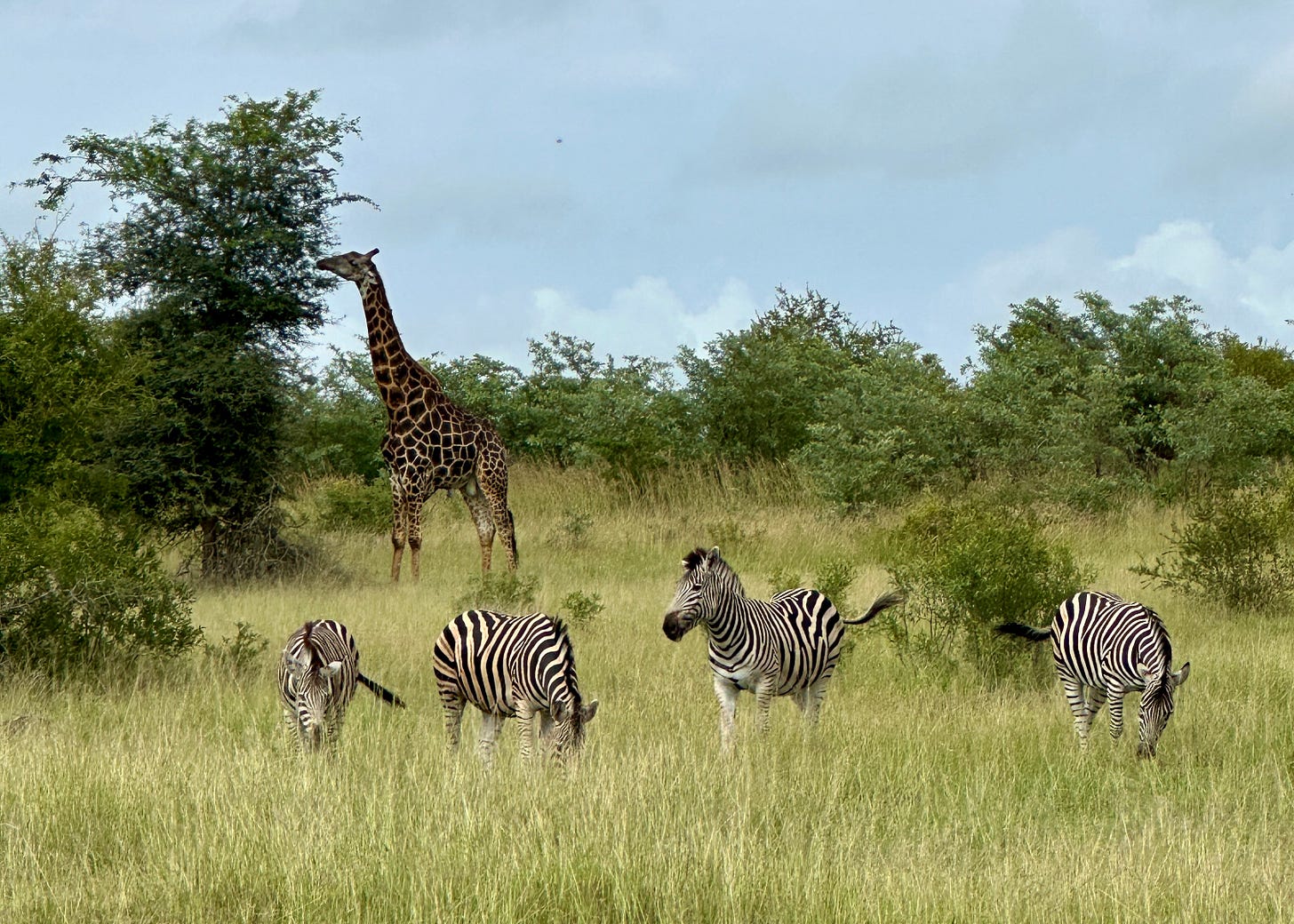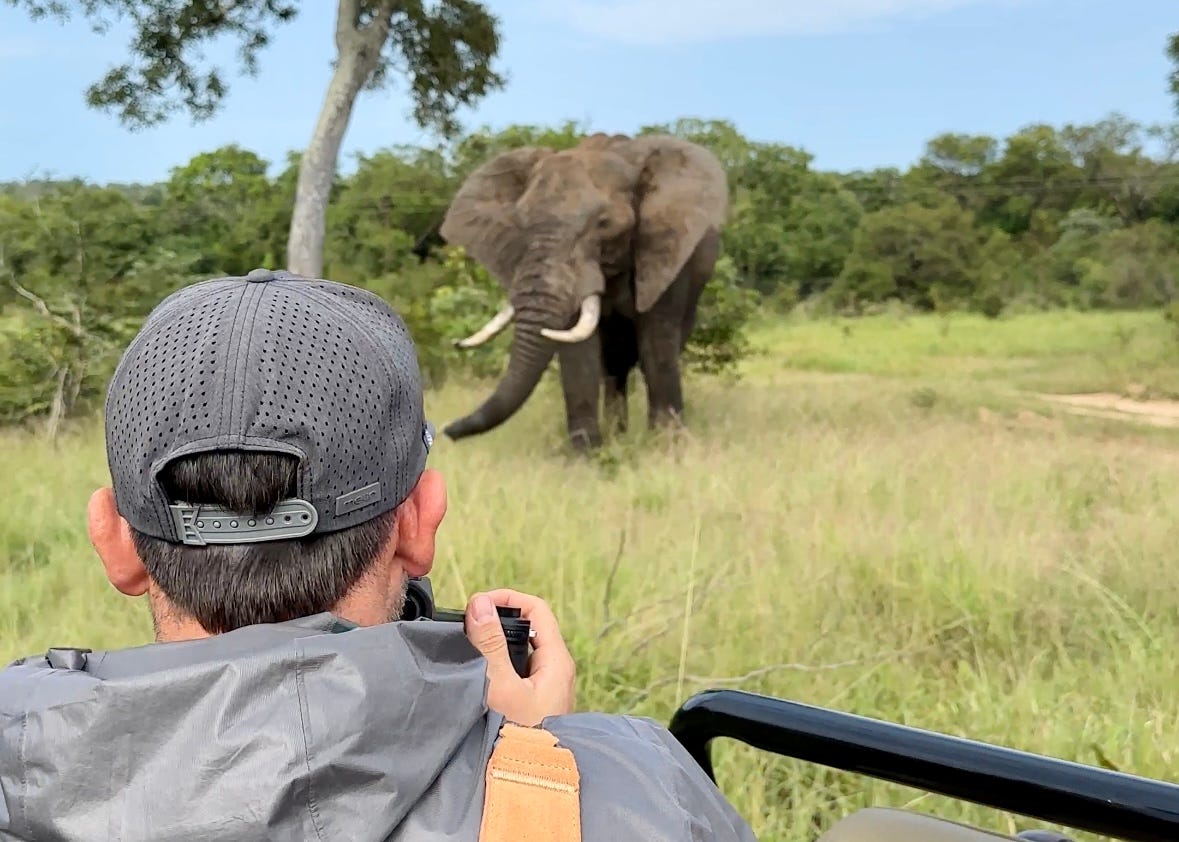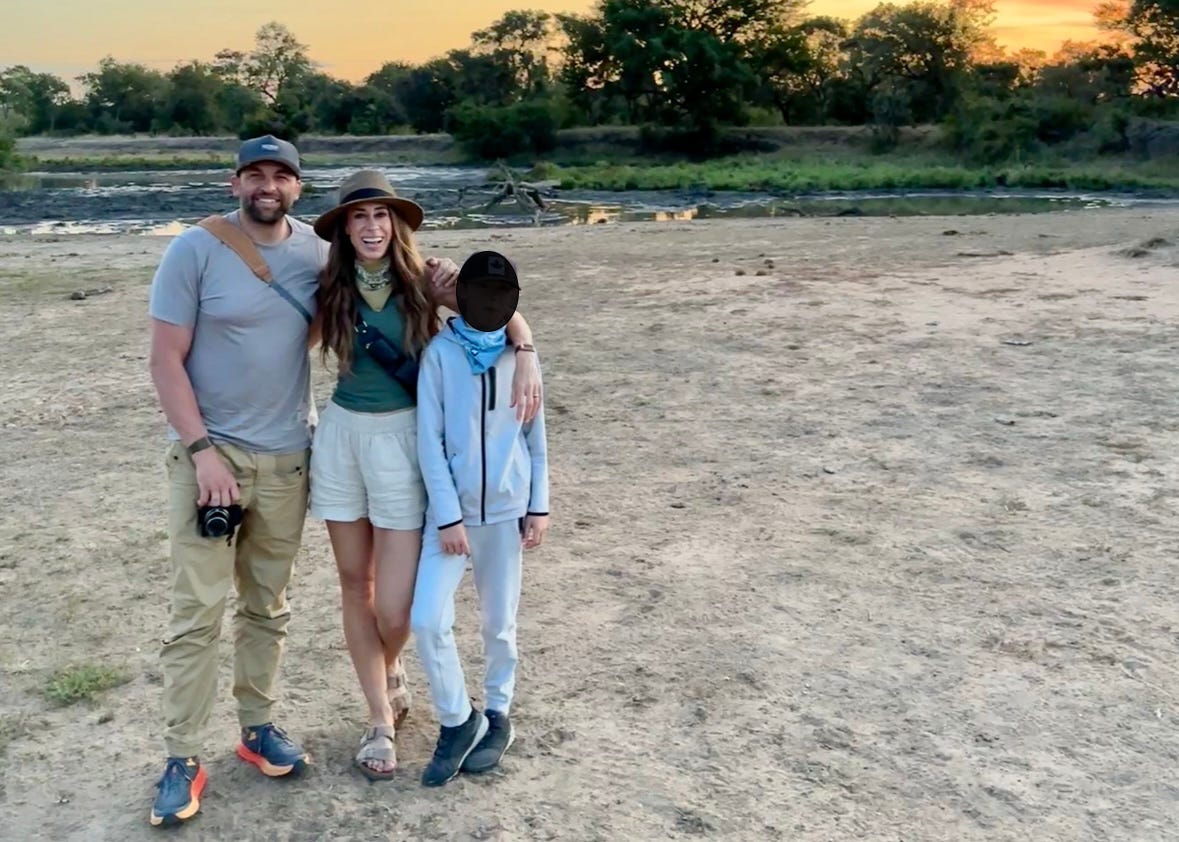Five things you should know about a South African safari
We just returned from eight magical days on safari with our 11-year-old. This is everything you need to know before booking your trip.
This issue is sponsored by WHOOP. Using WHOOP to monitor my sleep, stress, and health during my safari helped me decide when to nap, when to move my body, and if I could afford to have a glass of South African wine with dinner. Join WHOOP now and get a free month.
My husband, 11-year-old son, and I spent three weeks in South Africa in April 2024; the first eight days of that were on safari. (See our full itinerary here.) In this article, I’ll share my high-level top tips for your South African safari. At the end, I’ll also link to a super-detailed article with all of my reviews, plus everything I’ve learned from my research and my time on the game drives, for paid subscribers.
1. What month is best for safari?
The best time to safari in South Africa isn’t always the best time to visit other locations, like Cape Town or the wine lands. If you want to turn your safari into a bigger trip, you’ll have to prioritize one experience over the others—or choose a “not quite peak” month like April.
May (end of fall) through September or October (early spring) are peak safari months based on the temps and conditions. During this seasons, animals tend to be concentrated around water sources and are easier to spot in the dry season's thinned-out vegetation. In these seasons, average temperatures in the Krueger National Park area range from 60-70°F, but can vary widely, getting up to 80°F during the day, and as low as 40°F at night. (Temperatures on the southern coast can be much cooler.)
November through February are the rainiest months for safari, but are considered “peak season” for visiting coastal areas like Cape Town. February is the height of their summer, so it’s also the warmest month for visiting South Africa’s beautiful beaches and swimming.
The Cape Winelands (including the regions of Stellenbosch and Franschhoek) are especially active between September and April. In this leafy, green and mountainous landscape, the weather is hot and dry in summer. This is also when many vintages of wine are released. (Harvesting typically begins in March.) Wine country tourism reaches its peak in December, January, and February.
Pro tip: Our guides told us that animals have babies all year long, so there is no one particular “season” to see baby lions, giraffes, or elephants. In early April, we saw lion cubs and baby elephants, giraffes, and zebras; had near-perfect fall weather on all of our game drives; and experienced no crowds—but it wasn’t warm enough to swim in Cape Town.
2. Where should you safari?
There are a number of safari areas in South Africa, but we chose to stay close to Kruger National Park, the most famous safari destination. Kruger is huge (more than 2 million hectares) and offers more distance, more animals, and more environmental variety than the many private game reserves outside its borders. Lodging is also more affordable than you’d find in a private game reserve. However, there are some trade-offs inside the park:
Traffic congestion at prime sightings is common, and there are many self-drive vehicles on the roads, especially during peak seasons.
Cars in Kruger have covered sides and canopy roofs, which can limit viewing.
Kruger doesn’t utilize trackers to find animals (just a guide, who drives the vehicle).
Cars have to stay on the roads, most of which are tarred, giving you less of an opportunity to get up close and personal with animals.
Nighttime drives in the park are not permitted.
There are a number of private game reserves bordering Kruger National Park. These reserves are often unfenced, so animals from Kruger can (and do) wander in and out. Lodging, amenities, and activities tend to be more luxurious—and also, more expensive. However, there are benefits, including the “up close and personal” experience you can get in a private reserve.
Game drive vehicles are permitted to go off-road to get closer to the animals for the “big five” and predators. (Guides are sensitive to the environment, limiting their off-roading to protect the bush, and practicing regular environmental restoration.)
There are no self-drive vehicles permitted in the private reserves, reducing congestion and the impact on the environment and animals.
Reserves limit the number of vehicles at animal sighting, to maintains the animals’ peace and comfort and ensure an optimal viewing experience.
Game drives can continue past sunset, giving you more opportunity to see unique animal interactions and behaviors.
Pro tip: These private reserves can be far enough away from each other that you could book two different areas with ease, allowing you to see different vegetation, birds, and concentrations of animals. While we saw the “big five” at both of our lodges, we saw leopards up close on several locations at our first lodge, and bigger elephant herds and lion cubs at our second location. Short airplane transfers make for quick and easy travel between private lodges.
3. What is the game drive schedule?
For all guests, life at the safari lodge revolves around the twice-daily game drives. The drives are held at sunrise and sunset; when the animals tend to be most active. You’ll leave for the morning drive just before sunrise, and in the evening, you’ll finish the drive sometime after sunset. (Plan on sharing a car with other guests; it’s rare to have a car to yourselves unless you specifically pay for a private drive.)
It wasn’t until our lodge orientation that I realized the schedule can be rough, especially with kids. (More on that below.) In early April, our schedule looked like this:
Morning drive: Wake at 5 AM, meet in the lodge at 5:30 AM, and start the drive at 5:45 - 6:00 AM, finishing around 9:00 AM.
Evening drive: Meet in the lodge around 3:45 - 4:00 PM, and start the drive at 4:00 - 4:30 PM, finishing around 7:00 or 7:30 PM.
Meals are also planned around the game drives, which means your daily schedule start to finish is pretty regimented. We ate breakfast immediately upon returning from the morning game drive, around 9:00 AM. Lunch was served midday, around 1:30 PM. Dinner was served between 7:30 - 8:00 PM, allowing guests to return from the evening game drive and change or get a drink before dinner. That meant we were finishing dinners at 9:00 PM with a 5 AM wake-up call in our future.
PRO TIP: The game drive schedule may be pretty chill in peak winter months of June, July, and August, given the short days of the season. However, in late spring, summer, and early fall, the days are longer—which means morning drives start earlier and evening drives finish later. Use this calendar to estimate the sunrise and sunset times for your trip; select Mbombela as the closest big city.)
4. Get ready to SIT
This trip was the least active I’ve ever been on a vacation, but also the most exhausting, because of the schedule. Game drives are three hours each, and may run longer if you see something cool or drive out of your way for an animal sighting. During game drives, you are in the car 95% of the time. (In the bush, there is little opportunity to get out and walk around.)
This means you’ll be in the car for six hours a day, every day of your safari. The time goes by fast and I was never bored, but it is a lot of sitting. You’re also completely exposed to the elements, including sun, heat or cold, wind, bugs, and rain, which can also feel draining.
I planned on using my lodge’s gym facilities, but most days, I didn’t have the energy given our early jet lag and the schedule. Our lodges had walking paths, pools, yoga mats, and other ways to stay active during down time, but mid-morning to early afternoon, we mostly napped, looked at photos from the last drive, read, swam, or played games.
We are definitely morning people, so the early wake-ups were no problem, even for our son. However, we are also early-to-bed people, which wasn’t happening given the late dinner hour. We made it through eight days of safari without missing any of the game drives, but desperately needed to catch up on sleep and mobility in the days after we left.
Pro tip: We headed straight into our safari upon landing in South Africa, but paid the price on day two when jet lag hit us hard. If you’re coming from the U.S., our guides gave us a tip: Spend a day or two in London, Amsterdam, or your connecting city to help you adjust to the time change before continuing on to South Africa. This adds an extra day or two to your schedule, but it will split up two very long flights, and you won’t have to navigate a 6-9 hour time change while trying to make the most of your limited time on safari.
5. Taking your kids on safari
My son turned 11 the day we left for South Africa, and I don’t think our trip would have been as successful had he been much younger. In addition, many game lodges restrict kids under a certain age from game drives or bush walks for safety reasons. (Check with your prospective lodge before booking; private game reserve lodges do offer more flexibility.)
You know your kids better than anyone, but here are some factors to consider before taking your kids on safari:
The game drive schedule is extensive and rigorous. If your kid can’t sit still for three straight hours twice a day, you may find yourself too distracted to enjoy yourself on the drives. (One of the other families at our lodge skipped a few game drives because their young kids weren’t up for it. This is a real expensive trip to skip out on the main event.) You may be able to request a private car for drives, allowing you to head back early if the kids demand it—but that might ruin your game drive, and it’s certainly more expensive.
Mealtimes are scheduled too. If your kid isn’t as flexible in their meal, sleep, and wake schedules, you may want to wait until they’re older for a trip like this. My son found many meals “too fancy,” although his palate is pretty expansive. (He struggled to sit through six hours of game drives and an hour-long five-course meal at the end of the night.) Our lodges offered him accommodations at many meals, but mealtimes are all on a set schedule, and the menus are sometimes limited.
Safety concerns. Our lodges required chaperones if you wanted to leave your room in the evening, for safety reasons. (Our neighbors were greeted by a hyena one night on their way to dinner, and we heard rumors of a leopard in camp when we arrived.) This means kids will have to sleep in the room with at least one parent—something to keep in mind when booking accommodations. Note that some tent-style or “treehouse” lodges don’t allow kids under the age of 12, for safety reasons.
On a positive note, some lodges specifically cater to kids. They offer kids’ camps, babysitting services, and special activities, which may provide the perfect buffer to keep your kids entertained while you get some quiet time, have a drink at the bar, or enjoy a game drive. Still, we didn’t see many families with kids younger than 8, and I’d recommend waiting until your kids are at least 10 to truly make the most of your trip.
Enjoy your safari!
Are you planning a South African safari, or do you know someone who is? Share this article with them—it’s free to subscribe and read!
COMING ON THURSDAY 5/9: To read my super-detailed reviews of our two South African safari lodges, what I packed, what I wore, what we saw, and the rest of our South Africa itinerary, including Knysna, the Garden Route, and Cape Town, upgrade your subscription today! It’s just $6 a month or $50 for the year, and you’ll gain access to all of my safari, travel, and hiking guides.
XO, MU
I use my WHOOP to help me plan and track my workouts, hikes, and runs, but it’s also invaluable during travel. On safari, WHOOP’s sleep planner, AI Coach, and daily metrics helped me decide between a midday workout and a nap; see the impact of my late meals (ugh) and cold showers (yay) on my recovery; and maximize my sleep during already rigorous schedule.
You can’t always control your meal time, wake time, or stress levels, but WHOOP’s data can help you make the most of your days. With WHOOP, you can spend more of your travels feeling rested, recovered, and energized for what’s to come. Join WHOOP today and get a free month, plus a free WHOOP 4.0 and free Black Onyx band.



